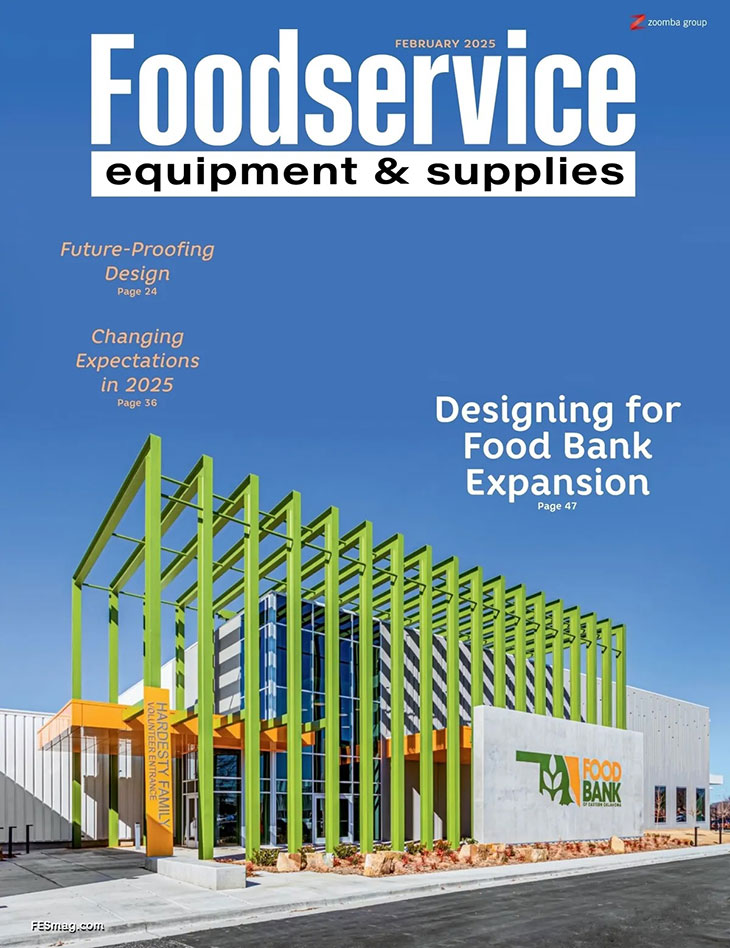Many of you might have heard about the WELL AP certification and building standard program but might have more questions about it, especially as more companies today prioritize the health and wellness of their workers.
 Kip Serfozo, FCSI, design director, Cini•Little Inc.“I think WELL is leading the charge today much like LEED did years ago,” says Kip Serfozo, FCSI, design director, Cini•Little Inc. Serfozo is a certified LEED ID&C AP and WELL AP designer. “There are pioneers making changes, but it’s more of a grassroots effort, with different organizations putting together their own checklist for clean, healthy environments buildings for the wellbeing of people working in the building.”
Kip Serfozo, FCSI, design director, Cini•Little Inc.“I think WELL is leading the charge today much like LEED did years ago,” says Kip Serfozo, FCSI, design director, Cini•Little Inc. Serfozo is a certified LEED ID&C AP and WELL AP designer. “There are pioneers making changes, but it’s more of a grassroots effort, with different organizations putting together their own checklist for clean, healthy environments buildings for the wellbeing of people working in the building.”
Serfozo says WELL gained traction in the early 2010s in the B&I segment but has moved into the university and even K-12 marketplace. “I’ve seen WELL-certified hotels, healthcare and even residential units,” he says. Some companies that have jumped on the WELL train include Uber, Citibank, CBRE, Bloomberg, JP Morgan Chase and others.
Where LEED focuses primarily on energy, water and waste savings in architecture and design, WELL does so as well but takes things a step further with a focus on indoor air quality and other design-driven improvements as well as operational benefits, such as access to health insurance and wellness programming. “The idea is to help employees work optimally because when they’re the most comfortable they can excel at what they’re doing,” says Serfozo. “That can maximize their productivity levels because they’re happier.” It’s also a win for the companies because with a WELL certification or designation they’re able to market the fact that they care about their people and customers.
Just like LEED, WELL offers varying levels of certification that clients can aspire to, or they can, as Serfozo mentioned, create their own “checklist” of sorts. “A third party will come in and survey the building and make sure it’s designed properly and has the operational criteria to meet the WELL building committee standards,” he says.
Here's a look at some examples of key design and operational standards for WELL building design:
1. Healthy Food
“There’s a whole nourishment category that encourages the offering of plenty of fruits and veggies and there are some requirements around nutritional posting,” says Serfozo. “There are also rules about food advertising; signage needs to nudge people to choose healthier items versus soda and fries, and there are some stipulations on artificial ingredients.”
Portion sizes also come to play—you won’t find “all you care to eat” programs in WELL buildings. WELL also focuses on special diets and allergies with labeling requirements and, for higher certification purposes, requirements for separate prep areas and allergen-friendly operations. Sourcing more local food is also encouraged.
2. Mindfulness
“In the cafeteria and foodservice areas do they have a mindful eating area?” That’s a question asked on the checklist, says Serfozo. Mindful eating areas are spaces where people can quietly enjoy a meal alone or with someone else. These spaces do not have loud TVs and music, though.
As part of this mind/mindfulness category, WELL standards include access to mental health and substance abuse programs and assistance. “You might even see mediation or relaxation rooms and spaces,” says Serfozo.
3. Safety & Sanitation
“There’s a lot of focus on hand sinks for back-of-the-house food-prep areas and also in the front of the house,” says Serfozo. Many of the WELL standards overlap with health department guidelines, but often take them a step further.
Even the littlest design features can help improve working conditions. “You need to make sure your hand sinks have splash guards so you don’t have potential splashing on prep areas or the floor which could create safety hazards,” Serfozo says.
4. Air and Water Quality
A big consideration for WELL design is indoor air quality. To monitor indoor temperatures and air quality, WELL sensors are placed throughout the space to collect such data as nitrogen and carbon dioxide levels and other measures of particulates in the air. The designers and operations teams use this data to monitor building conditions and more.
Electric equipment is becoming more of a focus in commercial kitchens thanks, in part, to WELL. “Any kitchen that operates with a lot of gas or solid fuel equipment has potential to offset more carbon and nitrogen dioxide,” says Serfozo. Aside from moving away from gas, “an efficient hood design goes a long way” when it comes to meeting WELL standards, he says.
“Thermal comfort is huge with WELL,” says Serfozo. This includes both general work areas, but also the kitchen. “If cooks are hot and uncomfortable, their performance is compromised.” Again, this is where electric equipment and high-tech hood systems come into play. “I think the days of solid fuel — as much as people like the flavor profile — are numbered; any manufacturer that can come up with equipment that works like solid fuel but is fully insulated will do well.” No pun intended.
When it comes to water quality, sensors help measure progress and Serfozo says sophisticated filtration systems — both for drinking, cooking and equipment maintenance – is a must in WELL building design.
5. Lighting, Ergonomics and Noise
“You don’t see a lot of task lighting in kitchens traditionally,” says Serfozo, but this is important for WELL design. “Some interior designers will throw in general LED lights, but they don’t always think about the individual chef and how task lighting might help them plate better. Pastry chefs definitely need special task lighting, and even bartenders — that’s one group that often gets overlooked when it comes to lighting.”
Not surprisingly, ergonomic design is an important part of WELL design, both for computer-based workstations, but also in the kitchen. “Work and prep stations need to be designed with ergonomics in mind,” including right-sizing tables and equipment and allowing flexibility for adjustments depending on someone’s height.
When it comes to noise, Serfozo points out that dishrooms tend to be the nosiest area of the kitchen. “Some dishwashers are super, super insulated and that does two things — it keeps the heat out of the environment and reduces the noise level in the kitchen,” he says.
Other “loud” pieces include pulpers, grinders, exhaust hoods and some refrigeration systems, but Serfozo says manufacturers are taking more steps to control decibel levels.
As we move into the next generation of workplace environments, WELL “is definitely something that’s going to help the labor market and potentially decrease turnover,” says Serfozo. “People working in a WELL building are happier in general; it’s like a breath of fresh air, literally and you feel more relaxed. Companies and foodservice employers can use that as a recruitment tool. We as consultants can support that. But the culture of the ownership has to be geared toward wanting to go for those standards.”




